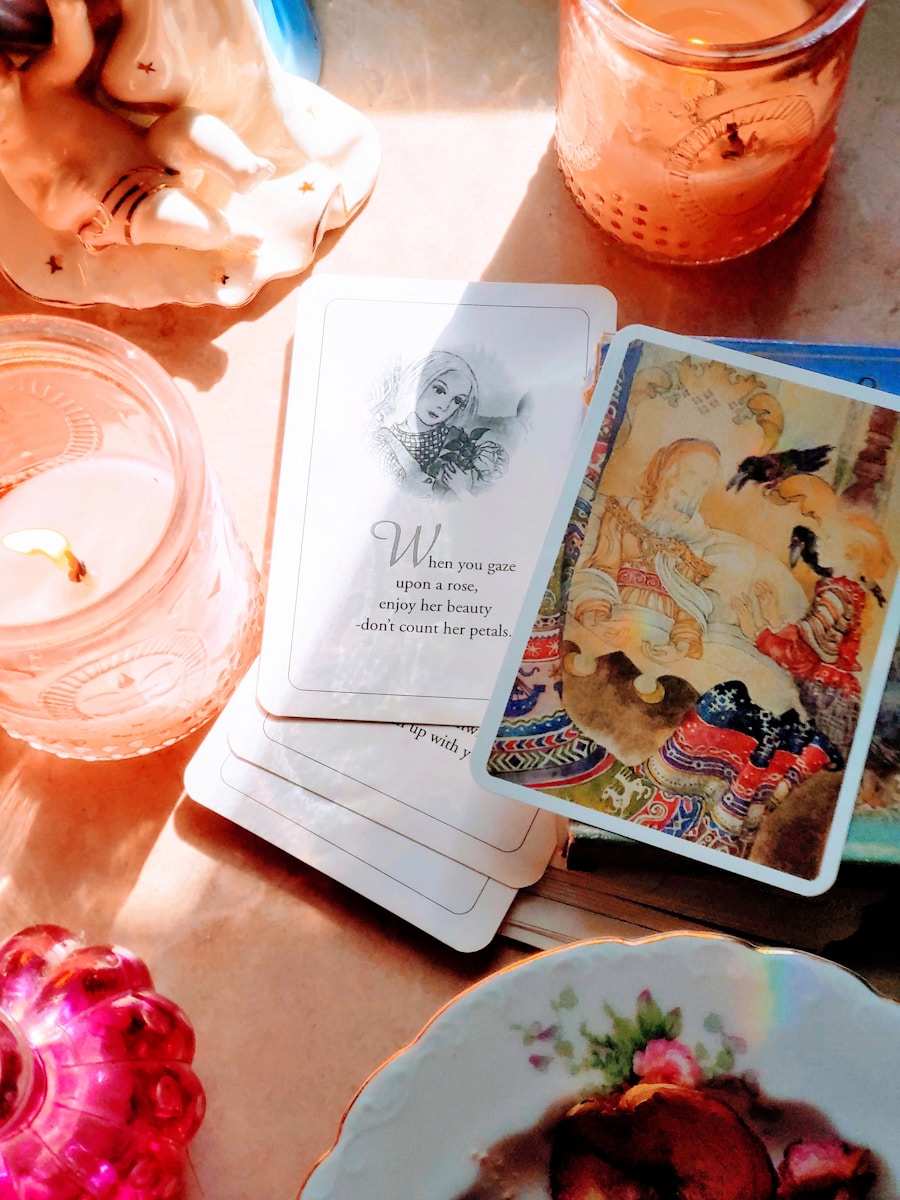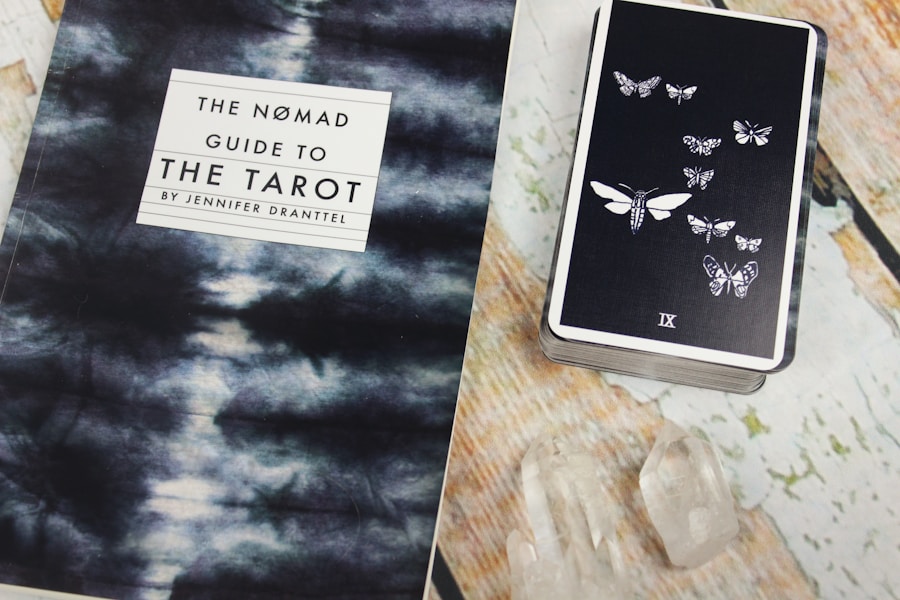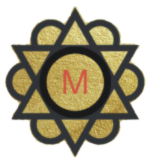
The Tarot is a deck of 78 cards, each imbued with rich symbolism and archetypal imagery that has captivated the human imagination for centuries. Traditionally, the Tarot is divided into two main sections: the Major Arcana and the Minor Arcana. The Major Arcana consists of 22 cards that represent significant life events, spiritual lessons, and deep psychological archetypes.
Cards such as The Fool, The Magician, and The High Priestess serve as powerful symbols of transformation and personal growth. Each card in this section tells a story, often reflecting the journey of the self through various stages of enlightenment and understanding. The Minor Arcana, on the other hand, is composed of 56 cards divided into four suits: Cups, Pentacles, Swords, and Wands.
Each suit corresponds to different aspects of life—Cups relate to emotions and relationships, Pentacles to material concerns and the physical world, Swords to intellect and conflict, and Wands to creativity and action. The interplay between these two sections creates a comprehensive framework for exploring both the inner and outer dimensions of existence. Understanding the Tarot cards involves not only recognizing their individual meanings but also grasping how they interact with one another within a reading, providing a nuanced perspective on life’s complexities.
Key Takeaways
- Tarot cards are a tool for self-reflection and insight, each card representing different aspects of life and human experience.
- Using tarot cards for meditation can help to focus the mind and gain clarity on specific issues or questions.
- Deepening meditation practice with tarot involves using the cards to explore subconscious thoughts and emotions, leading to a deeper understanding of oneself.
- Incorporating tarot card meanings into meditation can provide guidance and inspiration for personal growth and decision-making.
- Tarot card spreads for meditation guidance offer structured layouts for exploring specific areas of life or seeking answers to particular questions.
- Benefits of using tarot cards in meditation include gaining insight, clarity, and guidance, as well as deepening self-awareness and intuition.
Using Tarot Cards for Meditation
Setting Intentions
The visual imagery and symbolic meanings of the cards serve as focal points that can guide meditation sessions. For instance, selecting a card at random before beginning a meditation can set an intention for the practice. This card can act as a mirror reflecting one’s current emotional state or life situation, allowing for deeper introspection.
Exploring the Subconscious
By concentrating on the imagery and symbolism of the chosen card, practitioners can explore their thoughts and feelings in a more profound way. Moreover, using Tarot cards in meditation can facilitate a dialogue between the conscious mind and the subconscious. As one contemplates the imagery on a card, it may evoke memories, feelings, or insights that are often buried beneath the surface of daily life.
Tapping into Inner Wisdom
This process can lead to revelations about personal challenges or aspirations. For example, meditating on The Empress card, which symbolizes fertility, abundance, and nurturing, may inspire thoughts about creativity or personal growth. This connection can help individuals tap into their intuition and gain clarity on their life path.
Deepening Meditation Practice with the Tarot

To deepen meditation practice with Tarot cards, one can establish a routine that incorporates both card selection and reflective journaling. After selecting a card for meditation, practitioners can spend time in silence, allowing thoughts to flow freely while focusing on the card’s imagery. This practice encourages mindfulness and presence, as it requires one to be fully engaged with the moment.
Following this meditative session, journaling about the experience can further enhance understanding. Writing down insights gained during meditation can solidify these revelations and provide a reference for future reflection. Additionally, creating a sacred space for Tarot meditation can amplify its effectiveness.
This space could include candles, crystals, or other items that resonate with personal energy. By setting an intention for this space—whether it be for healing, guidance, or clarity—practitioners can create an environment conducive to deep meditation. The act of physically arranging these elements can also serve as a ritual that signals to the mind that it is time to enter a meditative state.
Incorporating Tarot Card Meanings into Meditation
Each Tarot card carries specific meanings that can be woven into meditation practices to enhance personal insight. For instance, meditating on The Hermit card invites contemplation on themes of solitude, introspection, and inner wisdom. This card encourages individuals to seek answers within themselves rather than relying solely on external sources.
By focusing on The Hermit during meditation, one might explore feelings of isolation or the need for self-reflection in their current life situation. Similarly, The Lovers card embodies themes of relationships, choices, and harmony. Meditating on this card can prompt individuals to examine their connections with others or consider significant decisions they face in their lives.
By visualizing the imagery associated with The Lovers—often depicting two figures in union—practitioners can reflect on their own relationships and what they desire from them. This process not only fosters self-awareness but also encourages individuals to align their actions with their values and desires.
Tarot Card Spreads for Meditation Guidance
Utilizing specific Tarot spreads designed for meditation can provide structured guidance during these sessions. One popular spread is the three-card spread, which allows practitioners to explore past influences, present circumstances, and future possibilities related to their meditation focus. By laying out three cards in sequence and reflecting on each one’s meaning in relation to their meditation intention, individuals can gain a comprehensive view of their situation.
Another effective spread is the single-card draw for daily meditation guidance. This simple yet powerful approach involves selecting one card each day to serve as a focal point for meditation throughout that day. The chosen card can provide insights into challenges one may face or themes to explore during meditation sessions.
For example, drawing The Chariot may encourage individuals to meditate on themes of determination and willpower as they navigate their daily lives. This practice not only enhances mindfulness but also fosters a deeper connection with the Tarot’s wisdom.
Benefits of Using Tarot Cards in Meditation

The integration of Tarot cards into meditation practices offers numerous benefits that extend beyond mere introspection. One significant advantage is the enhancement of self-awareness. By engaging with the rich symbolism of Tarot cards, individuals are prompted to confront their thoughts and feelings more openly.
This process can lead to greater clarity regarding personal challenges or aspirations, ultimately fostering emotional growth. Additionally, using Tarot cards in meditation can facilitate a deeper connection to intuition. As practitioners reflect on the meanings of various cards, they often find themselves tapping into their inner wisdom more readily.
This heightened intuition can guide decision-making processes in everyday life, allowing individuals to navigate challenges with greater confidence and insight. Furthermore, the ritualistic aspect of incorporating Tarot into meditation can create a sense of sacredness around the practice itself, making it more meaningful and impactful. In conclusion, utilizing Tarot cards as tools for meditation opens up new avenues for self-exploration and personal growth.
By understanding the cards’ meanings and incorporating them into structured practices like journaling or specific spreads, individuals can deepen their meditative experiences significantly. The benefits extend beyond mere reflection; they encompass emotional healing, enhanced intuition, and a greater sense of connection to oneself and the universe at large. Through this unique blend of ancient wisdom and modern mindfulness practices, Tarot becomes not just a tool for divination but a profound companion on the journey toward self-discovery and enlightenment.
If you are looking to deepen your meditation practice through the guidance of tarot cards, you may find The Hanged Man Tarot Card: Surrender, Sacrifice, and New Perspectives to be a valuable resource.
By surrendering to the present moment and opening ourselves up to new perspectives, we can enhance our meditation practice and cultivate a deeper sense of inner peace.
FAQs
What are tarot cards?
Tarot cards are a deck of 78 cards that are often used for divination, spiritual guidance, and self-reflection. Each card has its own imagery and symbolism that can be interpreted in various ways.
How can tarot cards be used to deepen meditation practice?
Tarot cards can be used as a tool for self-reflection and introspection during meditation. By focusing on a specific card or drawing a card at random, individuals can use the imagery and symbolism to guide their thoughts and deepen their meditation practice.
Are tarot cards a form of fortune-telling?
While tarot cards are often associated with fortune-telling, they can also be used for personal growth, self-discovery, and spiritual guidance. The interpretation of the cards is subjective and can be used as a tool for introspection rather than predicting the future.
How can I incorporate tarot cards into my meditation practice?
To incorporate tarot cards into your meditation practice, you can start by selecting a card that resonates with you or drawing a card at random. Focus on the imagery and symbolism of the card during your meditation, and allow it to guide your thoughts and reflections.
Are there any specific tarot cards that are particularly helpful for meditation?
There is no specific tarot card that is universally helpful for meditation, as the interpretation of the cards is subjective. However, cards that are associated with introspection, self-discovery, and spiritual growth may be particularly helpful for deepening meditation practice.






